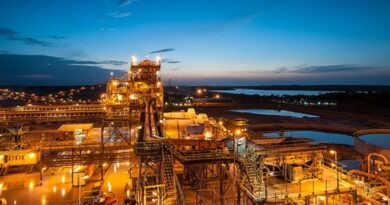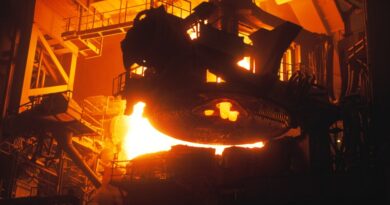RIO TINTO announces Q3 2023 operational highlights
Pilbara operations produced 83.5 million tonnes (100% basis) in the third quarter, 1% lower than the corresponding period of 2022. Shipments were 83.9 million tonnes (100% basis), 1% higher than the corresponding period of 2022. Rio Tinto continues to expect full year shipments in the upper half of the original 320 to 335 million tonne range.
Bauxite production of 13.9 million tonnes was 2% higher than the third quarter of 2022 as Rio Tinto achieved the initial benefits of stabilising our operations, particularly at Weipa where equipment reliability and performance improved.
Aluminium production of 0.8 million tonnes was 9% higher than the third quarter of 2022 as Rio Tinto returned to full capacity at our Kitimat smelter and completed cell recovery efforts at our Boyne smelter. All Rio Tinto other smelters continued to demonstrate stable performance during the quarter.
On 21 July, we announced we had entered into an agreement with Giampaolo Group, one of North America’s largest fully-integrated metal management businesses, to form a joint venture to manufacture and market recycled aluminium products. Under the terms of the agreement, Rio Tinto will acquire a 50% equity stake in Giampaolo Group’s wholly-owned Matalco business for $700 million subject to usual closing adjustments.
Matalco operates six facilities in the United States and one in Canada, with the capacity to produce approximately 900,000 tonnes of recycled aluminium per annum. Receipt of customary regulatory approvals for the transaction is progressing well, with completion now expected around the end of 2023 (previously first half of 2024).
Mined copper production of 169 thousand tonnes (on a consolidated basis), was 5% higher than the third quarter of 2022 as we benefited from the continued ramp-up of the high grade underground mine at Oyu Tolgoi and higher copper feed grades at Escondida. These benefits were partially offset by lower production at Kennecott, as the concentrator returned to full capacity during the period, recovering from the conveyor failure which occurred in March 2023.
Refined copper production of 34 thousand tonnes, was 37% lower than the third quarter of 2022 as we completed the largest rebuild of the smelter and refinery in Kennecott’s history during the quarter. The ~$300 million rebuild incorporated approximately 300 engineering and maintenance projects, and a workforce of ~3,200. The refinery and smelter were safely restarted during the period, with production expected to ramp up during the fourth quarter. The scope of works included a rebuild of the flash converting furnace, which was restarted late in the third quarter.
On 11 August, Simfer concluded key agreements with the Republic of Guinea and Winning Consortium Simandou (WCS) on the trans-Guinean infrastructure for the Simandou project. The Co-Development Convention with the Republic of Guinea and associated agreements create the legal framework for the co-development of more than 600 kilometres of new multi-use rail together with port facilities.
During the period, Simfer and WCS also signed an investment agreement in relation to the construction of the Trans-Guinean railway and port infrastructure. Investments into the infrastructure joint venture vehicle remain subject to a number of conditions, including the finalisation and approval of the feasibility study and capital funding requirements for the project by all partners, and regulatory approvals.
On 1 August, Rio Tinto announced the agreement to purchase PanAmerican Silver’s stake in Agua de la Falda S.A. (“Agua de la Falda”), a company with exploration tenements in Chile’s prospective Atacama region, and to enter a joint venture with Corporación Nacional del Cobre de Chile (“Codelco”) to explore and potentially develop Agua de la Falda’s assets.
Titanium dioxide slag production of 247 thousand tonnes was 20% lower than the third quarter of 2022. Two furnaces at our RTIT Quebec Operations remain offline following process safety incidents in June and July which we are currently investigating.
IOC production of 2.4 million tonnes, was 14% lower than the third quarter of 2022 as operations were impacted by extended plant downtime and conveyor belt failures, while Rio Tinto also recovered from wildfires which took place in Northern Quebec in the prior quarter. Given these challenges our full year production guidance has been reduced to 9.3 to 9.8 million tonnes (previously 10.0 to 11.0 million tonnes).
In the third quarter, Rio Tinto commenced deployment of the Safe Production System at a further two sites, taking the total to 22 sites. The Safe Production System focuses on continuously improving safety, strengthening employee engagement and sustainably lifting operational performance across our global portfolio.
While Rio Tinto still have a lot to do to see sustainable improvement, site deployments are rolling out according to plan and we expect to be at the upper end of our range of four to eight new sites in 2023.
On 9 August, Rio Tinto signed a multi-year supply agreement for high grade direct reduction iron ore pellets from IOC’s operations with H2 Green Steel, an industrial startup establishing large scale production of green steel.




